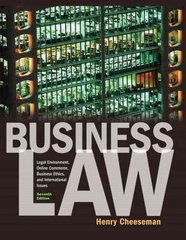Question
9.Consider the following investment opportunities: A = pays $22,000 with 50% probability and $0 with 50% probability B = pays $25,000 with 20% probability and
9.Consider the following investment opportunities:
A = pays $22,000 with 50% probability and $0 with 50% probability
B = pays $25,000 with 20% probability and $6,000 with 80% probability
C = pays $15,000 with 60% probability and $3000 with 40% probability
D = pays $10,000 with total certainty.
a.What is the expected return for each investment opportunity?
b.List the investments in order of preference for a risk neutral person.
c.If a risk-averse investor is willing to pay up to $300 to avoid risk (but they are indifferent between different risks), list the investments in their order of preference.
d.If a risk-seeking investor is willing to pay $300 to experience risk (but they are indifferent between different risks), list the investments in their order of preference.
e.Explain why a risk-averse investor would choose to have a portfolio that included a mix of the above investments.
Step by Step Solution
There are 3 Steps involved in it
Step: 1

Get Instant Access to Expert-Tailored Solutions
See step-by-step solutions with expert insights and AI powered tools for academic success
Step: 2

Step: 3

Ace Your Homework with AI
Get the answers you need in no time with our AI-driven, step-by-step assistance
Get Started


